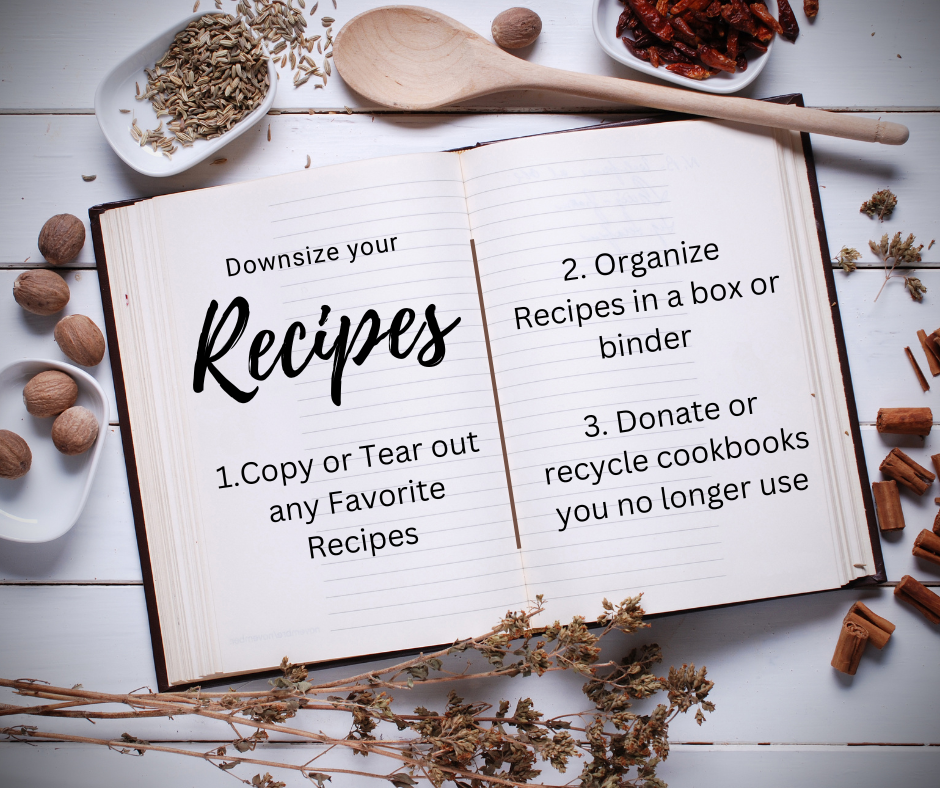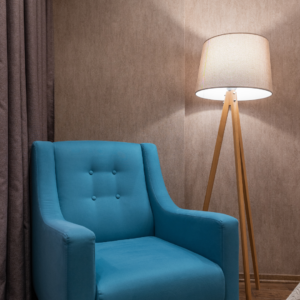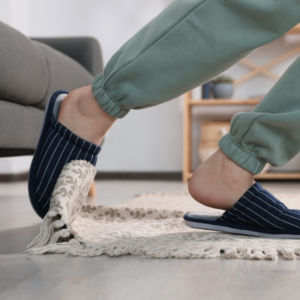
Easy Tortellini Spinach Soup Recipe
This easy soup recipe is from Taste of Home. A simple, but flavorful soup that will provide savory warmth in these cold days of winter. Fast and easy, all you need is a large pot and you are good to go!
Ingredients
16 frozen fully cooked Italian meatballs (about 1 pound)
1 can (14.5 ounces) fire-roasted diced tomatoes, undrained
1/4 teaspoon Italian seasoning
1/4 teaspoon pepper
2 32 ounce cartons chicken stock
2 cups frozen cheese tortellini (about 8 ounces)
3 ounces fresh baby spinach (about 4 cups)
Shredded Parmesan cheese, optional
Directions:
1. Place the first 5 ingredients in a 6-qt. stockpot; bring to a boil. Reduce heat; simmer, covered, 10 minutes.
2. Return to a boil. Add tortellini; cook, uncovered, until meatballs are heated through and tortellini are tender, 3-5 minutes, stirring occasionally. Stir in spinach until wilted. Serve immediately. If desired, top with cheese.
Can be made and frozen in single serve freezer containers. To keep the tortellini from over cooking, simply wait to add the tortellini until you reheat your frozen soup and cook for 3-5 minutes.

Easy Marshmallow Snowman
Now you can bring the snowman enjoyment inside—for both kids and adults—with this recipe for a marshmallow snowman! Put him together and rest him on top of your hot chocolate or latte for a fun added touch to a warm winter’s drink.
Ingredients
Instructions:
- Break 1 pretzel stick into 4 pieces: 3 equal pieces and one small piece. Keep the small piece for later, and use the 3 larger pieces to attach the 3 marshmallows together, angling the bottom 2 so that the marshmallows sit.
- Break the other 2 pretzel sticks in half. Put 2 pieces in the sides of the middle marshmallow to make arms, and put the other 2 in the bottom marshmallow as legs.
- Put the small pretzel in the middle of the top marshmallow as the nose, and use the black gel to make the eyes, mouth, and buttons. Your marshmallow man is ready to take a refreshing float atop your latte!
Staging Your Gingerbread House
The gingerbread house has been a popular culinary treat for centuries, but it didn’t become wildly popular until it was incorporated into a certain Grimm’s fairy tale in the 1800s.
For the past few centuries, however, it has become a resource for holiday creativity for young and old alike. Much like selling a real home, the challenge becomes: How can you stage yours so it stands out from the crowd? With these seven sensational tips, using common edible foods, you can make your house the talk of the town!
Put up walls
Make the walls out of something unique, like graham crackers or pretzel logs. (Or, if you want to save time, start with a pre-made gingerbread house kit.)
Raise the roof
As you know, roofs have to be made to last, so use royal icing to apply various cereals for a sturdy, more realistic-looking roof.
Rock the house
Use chocolate rocks for a stone fireplace or as an accent to the bottom of the home.
Go green
Add some fresh outdoor scenery: wrap fresh rosemary around a waffle cone to make a tree, or tie together in a circle shape for a wreath.
Have a stick-up
Pretzels are versatile as a snack—and as an accessorizing tool. Create shutters, a fence, and a bench with pretzel sticks, and use them as a stack of extra firewood.
Walk(way) this way
The path leading to a house makes an important first impression. Make yours impressive by cutting strips of cinnamon gum and arranging them into a pattern to create a brick walkway.
Let it snow
Add a wintry finishing touch by sprinkling a little coconut on your scene.

Downsizing Your Recipes

Gift Wrapping Downsize
Fall prevention for seniors



Falling is one of the main concerns for Seniors. A trip or stumble when at a younger age may have very little consequence. But as you age, that same trip or stumble can trigger a cascade of complications that have the potential of being debilitating. It is so important to create a safe environment to prevent falls. And, there’s more to it than just rugs and flooring.
Lighting Considerations Have you noticed that rooms seem dimmer and reading is more difficult because it seems you can’t get enough light on the subject? Besides waning eyesight, less light reaches our retinas as we age. This causes us to need more light in our environment so that we can see not only what we are reading, but also where we are stepping and walking so that we can avoid falls and other accidents.
The best way to light your environment it to use motion sensor lighting as much as possible. Some new beds include this under the bedframe so that you can see in the dark when you get up at night. Motion sensor lights can also be installed in closets, hallways, and bathrooms. Motion senor lights could also be installed on stairways close to the steps for better visibility. Painting stairs so that the top and bottom steps have a lighter color on them makes them easier to see. A handrail is essential on steps whether they are steep or not.
Doors & Door Knobs French door handles or lever handles are much easier for Seniors to operate than round doorknobs. Round doorknobs can be difficult to grip with arthritis or weak hands. The lever handles are much easier to operate and more convenient. If possible, install sliding and pocket doors rather than barn or swinging doors. Swing doors consume a lot of floor space to be operational. Barn doors take less space than swinging doors, but you still must consider the wall that the door will hang on when open and you may not be able to place any furniture in front of it.
lace rugs with nonskid mats on polished floor surfaces, and invest in anti-slip tiles for bathrooms and kitchens. If you get carpet, it should be flat and dense, not fluffy, which can lead to tripping.
Floors Floors are usually the first things that are considered when evaluating a house for fall hazards. It’s best to use flat and dense carpet that a wheelchair or walker can easily be moved on. Thick carpet pads, carpets, and fluffy or shag carpets are difficult to maneuver on and cause tripping hazards. Rugs are best avoided as the corners and edges can be trip hazards. However, if a rug is used, it also should be as flat and dense as possible with nonskid backing. For hard surface flooring, anti-slip tiles are a good investment. The transitions used from one surface to another should also be carefully considered. They should be as flat as possible so that they do not cause tripping or difficulty in getting over them.
Technology and Communications. Technology is not always considered when thinking about falling. However, cords and connections can be hazards to overcome. In addition to making sure the technology in the home is up to date, it is important to have ease of access to the outlets. Power strips set within easy reach instead of on the floor behind furniture so that the Senior does not have to struggle to reach their chargers or cords is essential.
Seniors need to be able to communicate easily. Make sure that High-speed Internet service, working smartphones or tablets, and access to social media or messaging services is available. A Fitbit or a voice assistant that uses a smart speaker, such as Alexa, can be used to help with medication reminders, grocery lists and tracking the weather. And, for added security, the Ring video doorbell system allows you to monitor who is at your door. It’s important to choose technology that is simple to use and easy for a Senior to navigate so that the effectiveness of the device can be beneficial.
Another part of communication for Seniors is to be able to send and receive messages, photos, videos and live chats. Finding easy to use, secure apps that facilitate these communications easily is a great way to help Seniors not feel isolated from their loved ones. It is easier now more than ever to stay in touch.
Bathroom. Handrails or grab bars by the toilet and by shower controls help with stability. It is helpful to have a bidet toilet with a night light. Not only do they conserve toilet paper, they are gentle on the skin, more sanitary than toilet paper, and make it easier for Seniors who suffer from arthritis or shoulder pain or other injuries that make reaching around difficult.
For the tub and shower, it is important to have easy access. Avoid having any steps into the shower. Make sure there is a seat in the shower. Many Assisted Living Communities have built in shower seats. Install a shower head that has a hand sprayer. If you have a tub, make sure there are plenty of grab bars placed in the correct position to assist getting into and out of the tub. The tubs with the side-panel doors are an excellent choice.
Kitchen. There’s no need to struggle with heavy pots and pans such as cast-iron skillets. Remove them from the kitchen and use lighter pots and pans. The same goes for any heavy plates, dishes, coffee mugs, glasses, and serving dishes. There is more of a chance of falling when struggling to carry something too heavy. Try to place the most used items within easy reach. Get rid of the step ladder! Place the microwave at eye-level. An automatic shut-off for the stove can be installed to prevent a fire. Air Fryers should remain unplugged at all times when not in use.
Living room. Power chairs and lift chairs that are wall huggers are excellent choices for the living room. If moving into Assisted Living, keep in mind the space will be smaller and choosing a wall hugger chair will give more space to maneuver around the living room. This is important because many times Seniors want to take their oversized easy chair and a coffee table and end tables and a sofa. It is nearly impossible to fit all of those large pieces of furniture into the living room and still have enough room to maneuver around without bumping into corners of furniture and bruising. Be realistic about enough space to use a walker to navigate your living room. Choose furniture that has multiple uses if possible: coffee tables that the top lifts for a desk or tray. End tables and chairs that have chargers built in. Avoid glass tables or furniture with sharp corners. These often cause falls and bruises.
Bedroom. The ideal bed height is 21 inches from the floor. This is the same height as a chair. Footboards are easily bumped into or catch toes and cause falls while walking around the bed. If you use a bench or chair in the bedroom, choose one that has side arms so you can get up easily. Nightstands should be able to accommodate glasses, medicines and a drink. If you have a CPAP machine, it needs to accommodate that as well. The nightstand should not be so large that it impedes getting into or out of bed. There should be light next to your bed. Some bed frames or adjustable bases include motion sensor lighting which is also very helpful.
Follow these basic guidelines and you will be well on your way to preventing falls due to the furnishings in your home.
How Seniors Can Sell Items on Facebook Marketplace (part 3)
In Parts 1 & 2 on this series on selling on Facebook Marketplace, we discussed the important terms you need to know and how to start your listing. We’ll cover the remaining elements of creating your listing.
Caption
The caption you write is just as important as the photos of your item. It’s time to put on your salesperson hat! Be as specific and detailed as possible in your description so your potential buyers don’t ask questions that could easily be answered by a thorough description. Here are a few pieces of information you can share:
- Brand, name, and/or model number
- Highlights of the item (what makes it better than other items like it)
- Size/dimensions
- Working condition and any damages
- Age of the item
- The original purchase price (optional)
Hashtags
When buyers want a particular item, they’ll search keywords into the Facebook Marketplace search bar to find options. It’s important to attach hashtags to your listing that are both general and specific. For example, if you’re selling a nightstand, you want to include “home” “home decor” “side table” and “nightstand.” Notice that those words started as general and became more specific, but all the words are fitting to the item. Avoid hashtags that make no sense. For a nightstand, you wouldn’t want to say “car.” This seems obvious, but a lot of people use the wrong hashtags and don’t attract the right buyers because of it.
Location
Before you can post your item for sale, you’ll need to set a location, either globally, nationally, or within a certain radius of your current location. Depending on the item and how quickly you want to get rid of it, it may not be worth the shipping hassle of listing it globally or nationally. High-value, compact items are best to list for shipping. Listing the item within ten miles of your home should get you a decent amount of interested buyers.
These tips should help you create your listings on Facebook Marketplace. If you decide to sell on Facebook Marketplace, make sure that you take measures to be safe with the delivery of your items and accepting buyers’ payment. Sometimes, when considering the amount of time and effort to list items, take offers, take payment and deliver or arrange pick up of items, you have to weigh that time and effort against the profit you will make so that you can decide the best use of your time and effort.
How Seniors Can Sell Items on Facebook Marketplace (part 2)
In Part 1 of this series, we discussed some of the terms that are important to know for Seniors selling their belongings on Facebook. In Part 2, we will cover 3 important elements of your listing on Facebook Marketplace so you can sell your items quickly.
Items
Avoid the urge to overload your listing with too many different items. It’s better to group like items together in a listing. So, you may have a listing of a small group of stereo equipment and speakers together. But, you don’t want to have a stereo, speakers, silk flowers, and a set of china in the same listing. When you group your similar items and list them in separate listings, you are making it clear what you’re selling and it will make it easier to mark as pending or sold. It will make it easier for buyers to make offers, as well.
Working Condition
It’s important if you want to make money on your Facebook Marketplace listings that the items you are selling are in working condition and free of significant structural damage. Otherwise, you need to sell it as is or as parts. Be honest with yourself if the item has damages and reduce your price significantly or list it as free. There is a market for damaged items that can be refurbished, but buyers will be picky about prices.
Photos
Facebook allows 10 photos per listing. If at all possible, use all 10 photos. Take quality photos from different angles. If there is any kind of signature or maker’s mark on your items, take clear pictures of them. Make sure that all pictures are clear and highlight any damages or signs of use. The more photos you have, the more likely people are to look closely at the item and consider purchasing it.
Using natural lighting to take your pictures is a great idea. Put your item near a window and stand on the same side as the window to take the photos. If you’re handy with any editing software, you can label different parts of your item or mark the measurements on the photo as well.
Pricing
The price you list your item for should reflect its value minus damages, normal wear and the demand for it. It’s up to you how much you list your item for, but be careful not to go too high because buyers do their research and won’t go for items listed at an unreasonable price. If you are putting all the effort into creating your listing, you want to have the best opportunity to make a bit of a return on your item. Do your research and price fairly!
In Part 3 of this series on selling on Facebook Marketplace, we’ll discuss the rest of the items you need to include in your listing.
How Seniors Can Sell Items on Facebook Marketplace (part1)
Oftentimes, Seniors ask us about selling their unwanted belongings on Facebook Marketplace. When furniture and other items will not fit in an Assisted Living apartment, decisions have to be made about what will go to donation and what will be sold. In this 3 part post, we will cover what Seniors need to know to sell on Facebook Marketplace.
General Lingo
There are a few phrases and abbreviations to learn so you can navigate Facebook Marketplace effectively. These are words that buyers use while searching. You may not use all of them in your listing, but you do need to know them so that you will know what buyers are talking about when they contact you using some of this lingo.
OBO
You might see OBO in the description of a listing. Here’s an example:
“$20 OBO”
This abbreviation means “or best offer.” A buyer may want to know what the best offer is that you have received so far before they give you their offer.
PPU
This is referring to the method of picking up the item purchased. It means Porch Pick Up. It is a commonly used when people prefer contactless transactions. Your buyer may prefer to come and pick up their purchased item from your porch or driveway.
Meet Up
If you prefer to meet at an agreed upon public place to ensure safety, you would use this term in your listing.
ISO
“In search of” or ISO might be listed under items that people are giving away as a trade. Their listing might say something like: “Looking to trade my antique lamp ISO a nightstand.”
Pending
When you have an interested buyer, you might label the listing as “pending” which will indicate that if the sale falls through, it will still be available. This way you can contact the next possible buyer in the list if the sale does fall through. Buyers will use the save button to check back and see if the item becomes available again.
In Part 2, we’ll explain some of the specifics to consider and include when creating your listing.
Downsizing Doesn’t Have To Be Lonely
You want family and friends to come and visit you in your new Assisted Living Community, right? Here are some tips to not only plan for visits, but to plan for your comfort and safety as well. Senior Downsizing is joining a community to increase social interaction, as well as to continue to enjoy your family and friends. This video is a summary of the important points in the article published on here.
